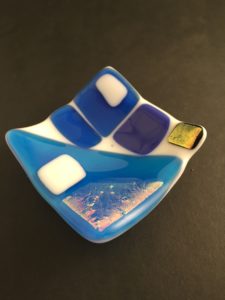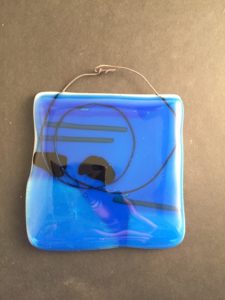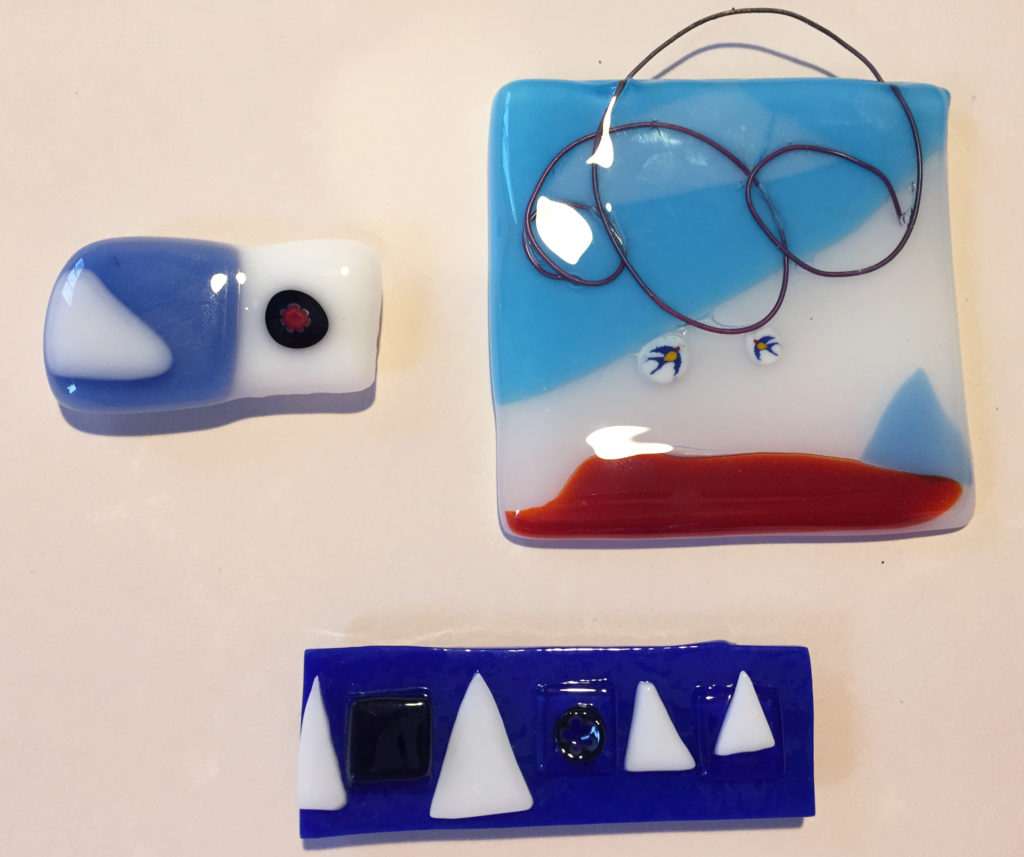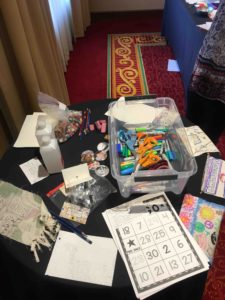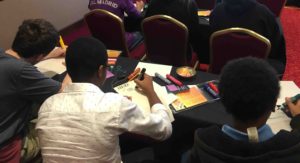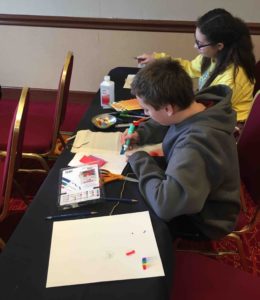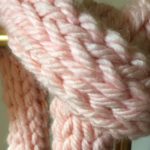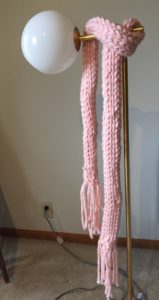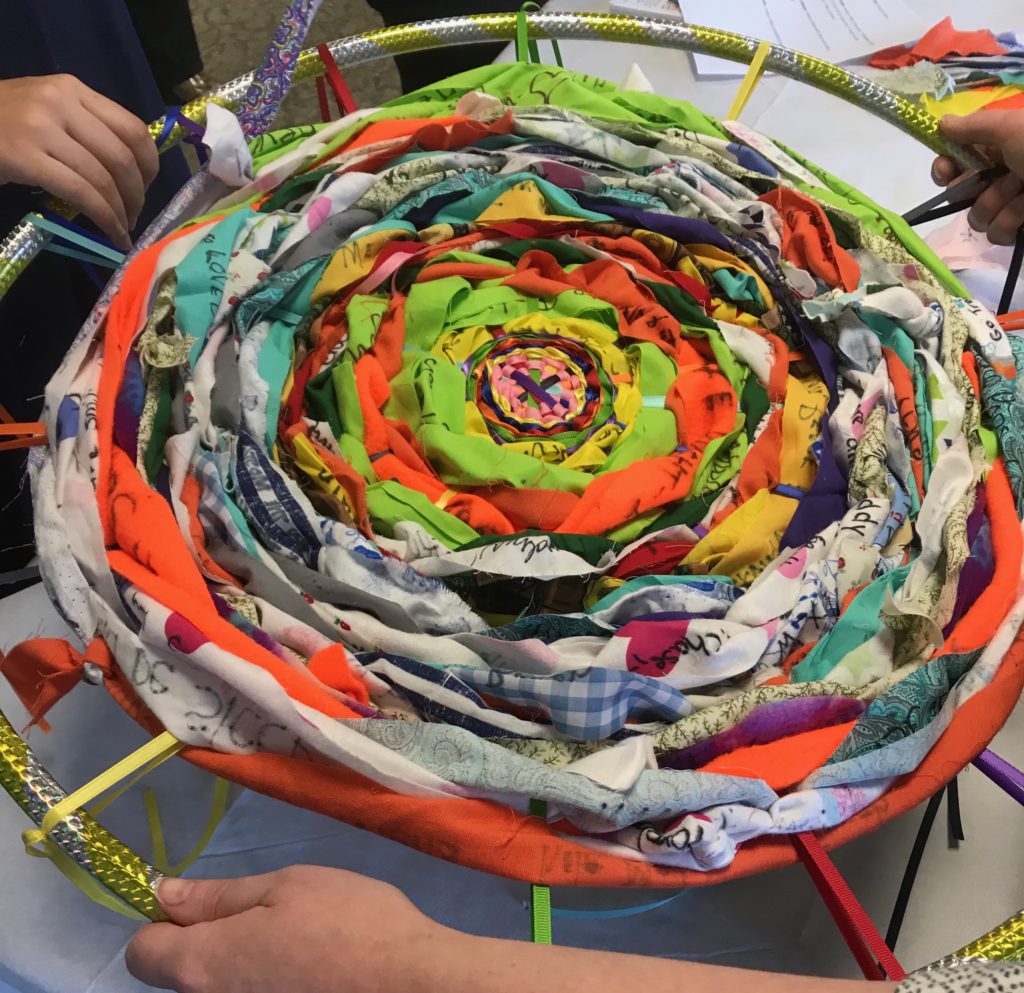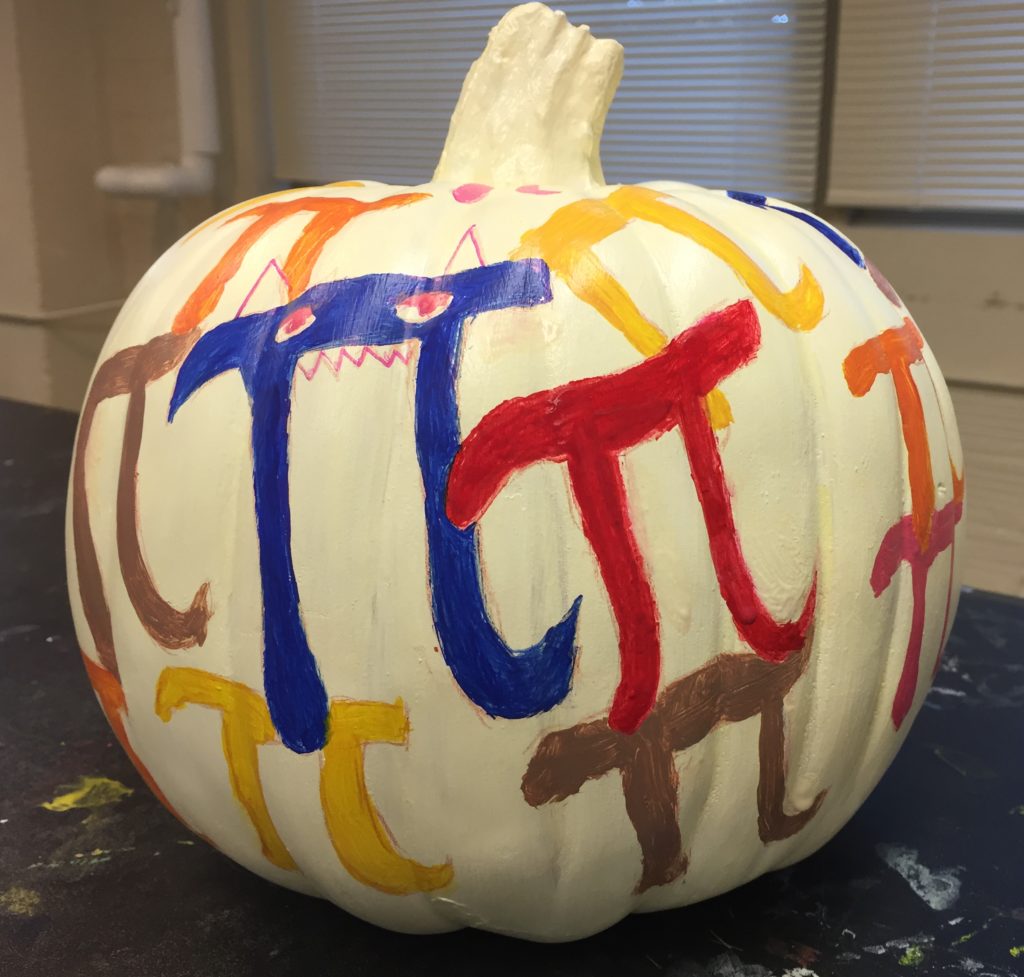Spin Drawings and the FInal art show
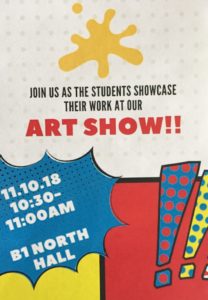
Art Show Flyer
This week was our final art show for the Saturday Art Workshops and we also had a 60-minute lesson on spin drawings for them to do. We set up the artwork a few days before the show but in order to involve them in talking about their work, I suggested that they think about how they would describe the process and ideas of their work to their families.
After the opening ceremony where one student passed out her business cards of her bakery business (impressive), we showed them our spin drawing examples and the slides on the rotoscope, zoetrope and early filmmaking, they jumped into making the drawings on paper. These are examples of simplified animation that kids really enjoy.
Spin Drawings and videos

One side of spin drawing
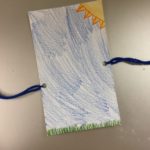
Backside


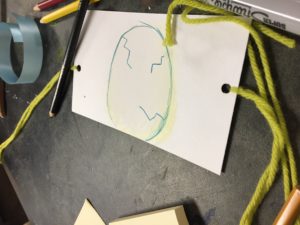
They also made flip-books with post-its which are an easy way to do that. The main aim of this activity was to get them to create movement by playing with puns through images as a starting point. Together, they talked about their ideas while they were making them. Each image can be on one side and make a third meaning together, such as “eye roll” or “eye scream,” or my example “present tents,” which had two tents and a gift box on it. They seemed engaged right away with the humor part of it. It’s good to have a sponge activity for times in your classroom that might be filling the space in between lessons.
The final art show
For the art show, families came to see their kid’s work and talk to them about how they made it. A couple of our students did that and showed their parents their paintings and animations and explained the process of making it. In order to provide more explanation, I showed my blog that people could look through set to the painting page and Colleen had slides with her Rube Goldberg lesson.
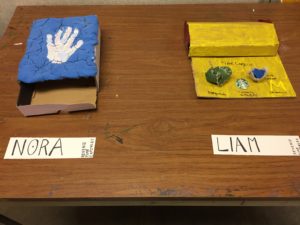
Time Capsules
They displayed their spin drawing near another piece of work in the show to keep items together. I think our space was visually cohesive and we grouped similar lessons together to show different examples of the same project and celebrate individuality. Overall, this art show was a success because we had families coming by to comment on their pieces, ask us questions and see what other kids had been doing these past eight weeks. It was really nice to see how proud they were and show that off to their parents.

Time Capsules
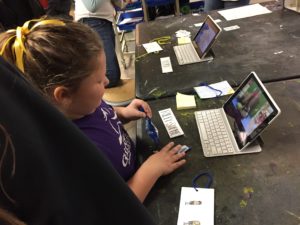
Showing off her animation

Batik and Screenprinting
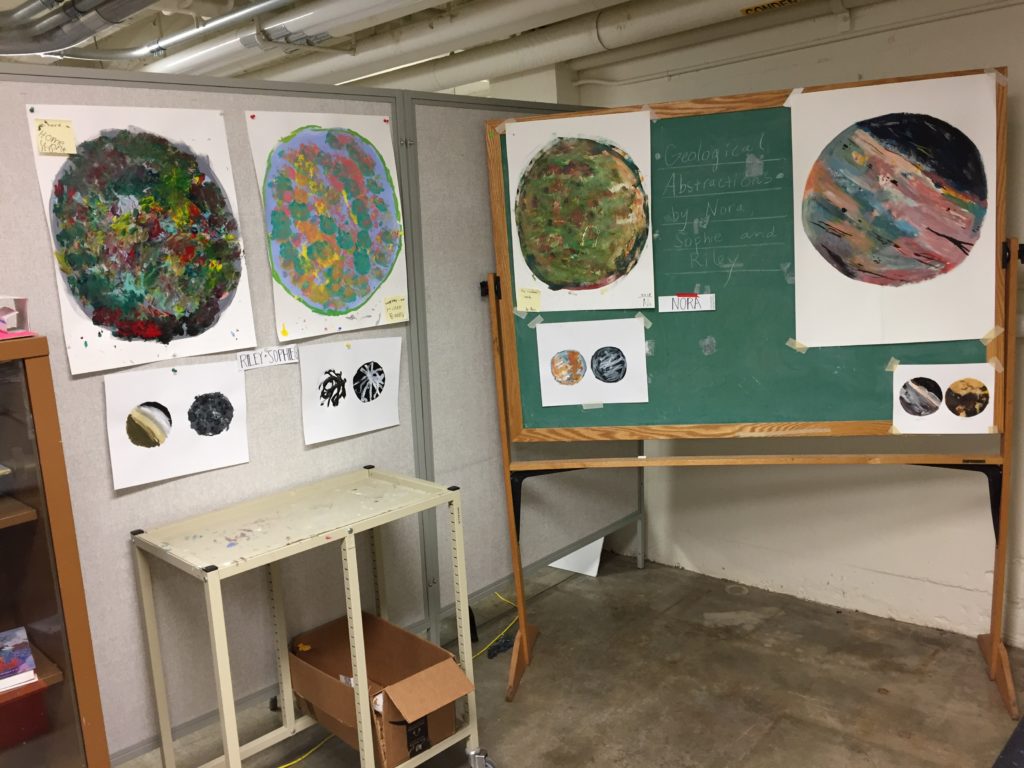
Geological Abstractions
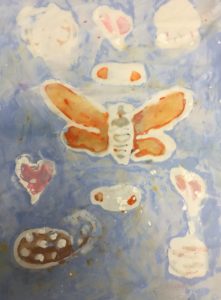

Toothpaste Batik
Classmates’ spaces in the art show
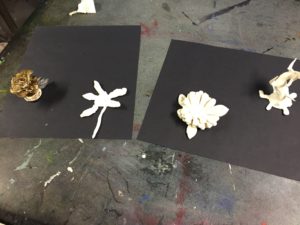
Midwest Wildflowers–Emily and Kate
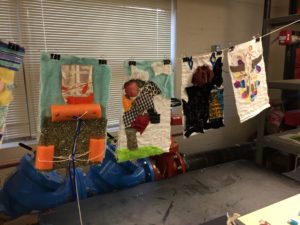
Tapestries – Emily and Kate
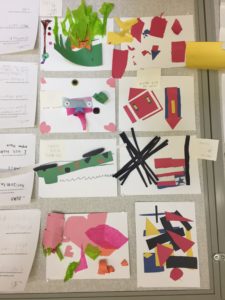
After Mondrian — Britney and Annie
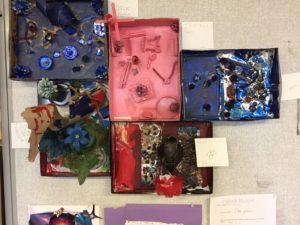
After Louise Nevelson — Britney and Annie

